Direction, Reaction, and Messy Ideas
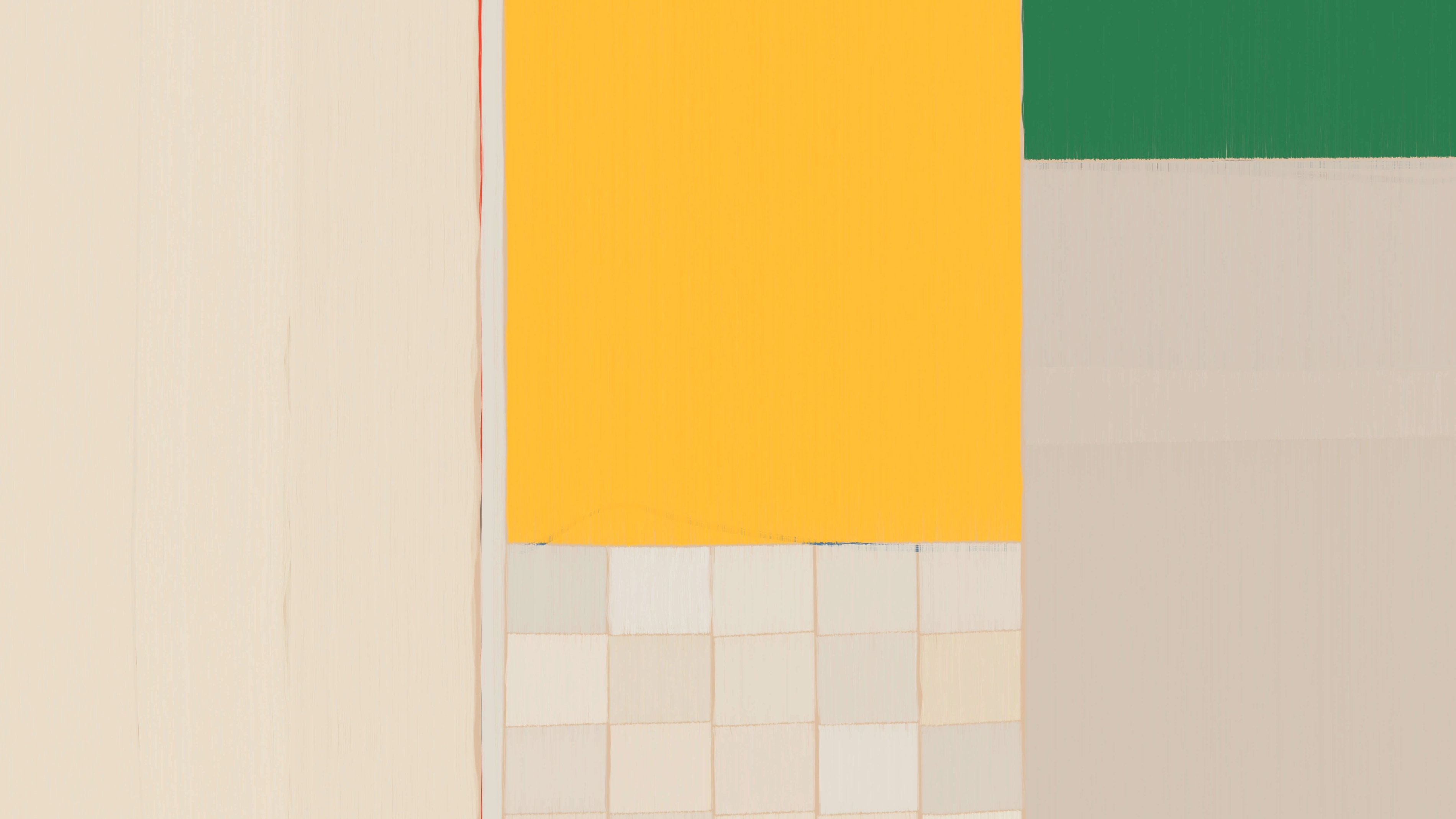
A generative artist can accomplish their work not only through direction and the crafting of directives, but just as much through their reaction to the products of the generative process, and through the curation of outputs they present to the audience. Although it may seem surprising, the reactive work can even be the most important phase in the entire artistic process for shaping the final outcome.
When thinking about the practice of generative art, we often focus on the directives, because those feel more like making something. Directives are rules and procedures that the artist defines, which then guide the execution of the generative process. For example, they might state how a curve is constructed, or how colors are drawn from a palette. Directives have to be clear because they are instructions. If the directive allows for a range of behaviors to occur via the use of randomness, the artist has to specify exactly how the randomness is used and what potential values might come from it. In other words, even when randomized, the directives are limited to concerns that the artist can articulate in a clear and logical way. This is a key limitation. Art usually isn’t just about what we know and can articulate clearly. Instead, it is often the most compelling when it touches on the confusing spaces in between clear ideas.
In generative art, I like to think of a “messy idea” as a kind of multi-dimensional “space” of potential possibilities: one which has many facets, contours, and surprising pockets of richness.
In generative art, I like to think of a “messy idea” as a kind of multi-dimensional “space” of potential possibilities: one which has many facets, contours, and surprising pockets of richness. It is practically impossible to describe the whole space, and therefore just as tricky to pinpoint exactly where those inviting pockets might lie within it. The artist may intuitively sense that those rewarding moments are somewhere out there, but, due to the complexity of the idea, they can never be pinned down and cannot be individually, explicitly pursued. Instead, the artist takes the approach of crafting directives with the goal of carving out a generation space that is “close” to the edges of the messy idea. Like mining for gold, the exact location of the gold vein may not be known, but a systematic approach can place you in the right general area. At the bare minimum, you want to avoid wasting your time searching in areas where you know the gold is not.

Simple directives attempt to approximate the edges of a rich, messy idea.
When the generative process is executed and the directives are run, a random sample from that generation space is taken in the form of an output. If the directives are well-crafted, these random samples will occasionally strike those rich pockets of gold. Upon observing the outputs, the artist can immediately identify these gold nuggets: the moments that speak to their heart and represent the fulfillment of their creative vision! These outputs are often successful in a way that the artist could not fully anticipate, which is part of what makes them impossible to access directly via directives. However, through reaction, the artist has no trouble recognizing excellence, even in completely unforeseen configurations.
The artist often chooses to allow their reaction to the work to guide them in a final curation process, selecting which of the outputs from the completed generative process will be presented to the audience. Every output presented can open up a window to provide a novel view of the messy idea at the core of the work. While each output may serve to highlight a different rich and interesting pocket for the viewer, that output must also be appreciable as a stand-alone composition telling a singular story. All of the artist’s years of experience crafting and consuming art will come into play during this process, influencing their reaction in wordless ways, allowing them to simply “know” when a generative moment is special and worthy of presentation.
The messier the idea, the greater the importance of the artist’s work in the curation phase. Not only does the selection work completely shape the viewer’s perception of the ideas at the core of the work, it is often the phase of work that is the most emotional and free. The artist is able to react and respond to generated moments intuitively. They are not burdened by the need to simplify feelings into the logical concerns that the directive phase requires. The directives are necessary, undoubtedly. They are the craft that allows the art form to exist. And yet, in many ways, I feel that reactive selection is the purest form of the artist’s work, most directly connected to their heart and vision.

Day Garden #44
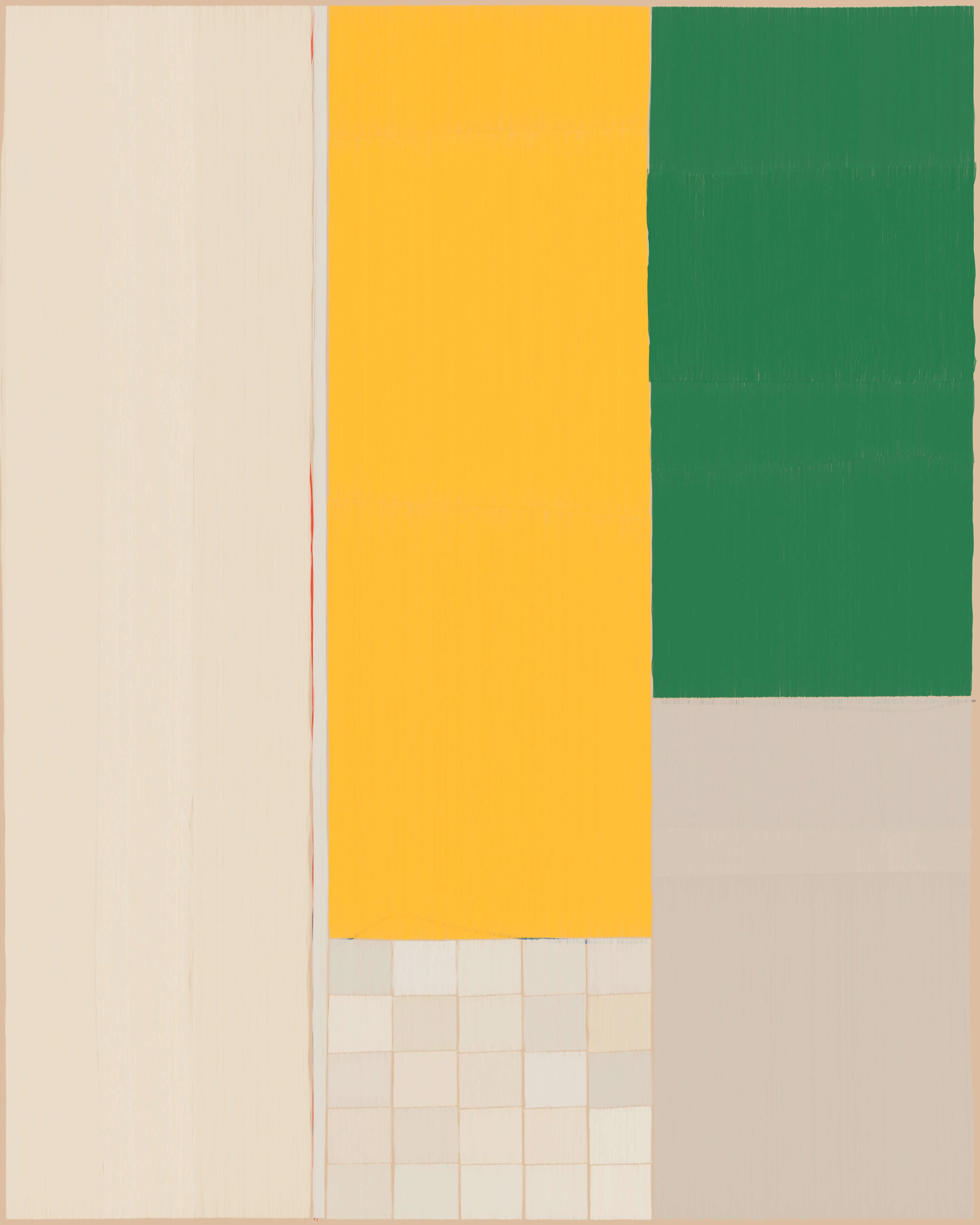
Day Garden #37
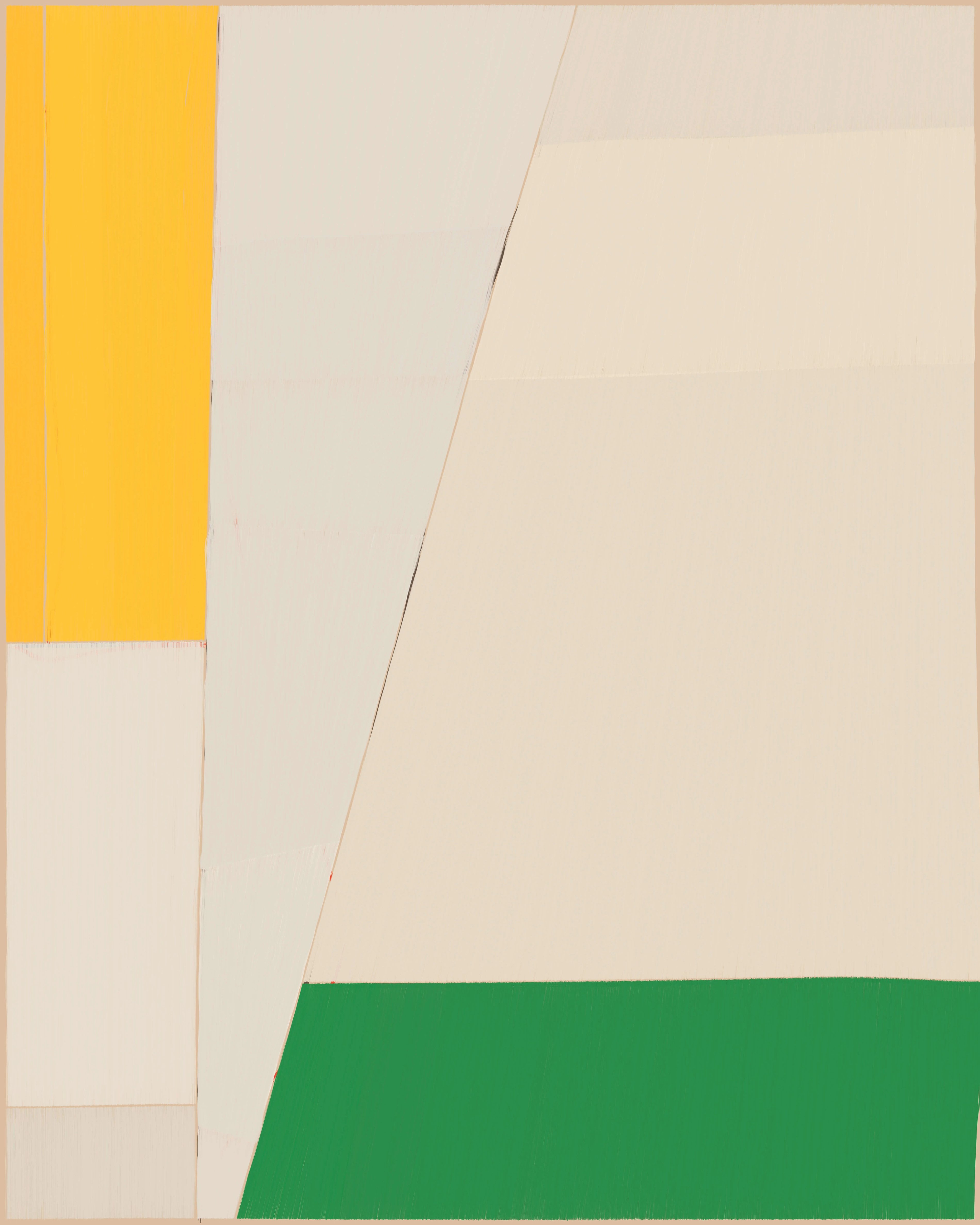
Day Garden #48
____________________________________________________
Addendum:
I wrote some detailed thoughts on the challenges and aesthetic qualities of this particular mode of creation in my 2021 essay on "Long-Form Generative Art".
Direction and Reaction in Practice
For the sake of clarity, I have so far mostly presented direction and reaction as two distinct phases that happen one after the other, but in practice they are a bit more mixed. A generative artist typically tests out their directives as they are being constructed. Their reaction to the in-progress results will guide further development or refinement of the directives.
Every work has a different ratio of “reaction” that happens while directive construction is still in progress versus reactive selection that happens after all directives are in place and the generative process is fully complete. Some works use a balance of both, while others may rely more strongly on one alone.
This was the case for early 2020’s works on Art Blocks, such as Fidenza, Ringers, Archetype, and many many others. By choosing to entirely forgo reactive selection as the final phase of work, these works sat at one extreme end of the spectrum. This choice typically forced the artist to be more precise in their directives, often reducing the "messiness" of the idea [1]. While the artists themselves did not carry out a final reactive selection phase, I think you could make a reasonable argument that in this format the final reaction phase was actually left to the audience. As they directly consumed the unfiltered outputs from the generative process, the audience was effectively responsible for highlighting which outputs resonated most strongly. This typically resulted in a few specific crowd favorites emerging from a larger set of outputs.










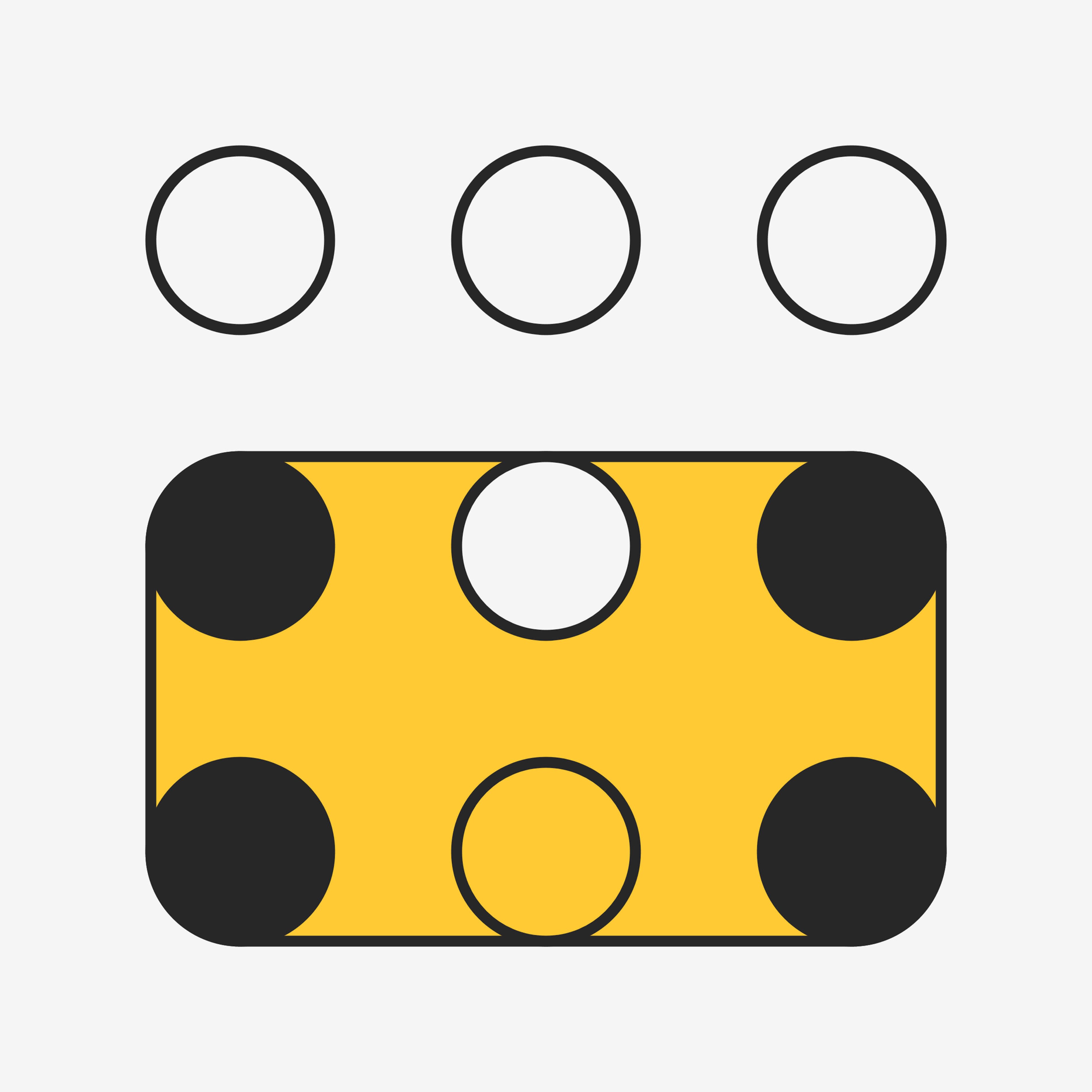

Ringers by Dmitri Cherniak
Other works, like QQL, or William Mapan's Sketchbook series, explicitly turned over the final reactive selection phase to the audience and made it part of the artistic process. Only those outputs which were selected by the audience actually entered into the canonical final body of work. By trusting the audience to allow their own reaction to guide the selection process, the artist was free to keep the generative idea more “messy”.
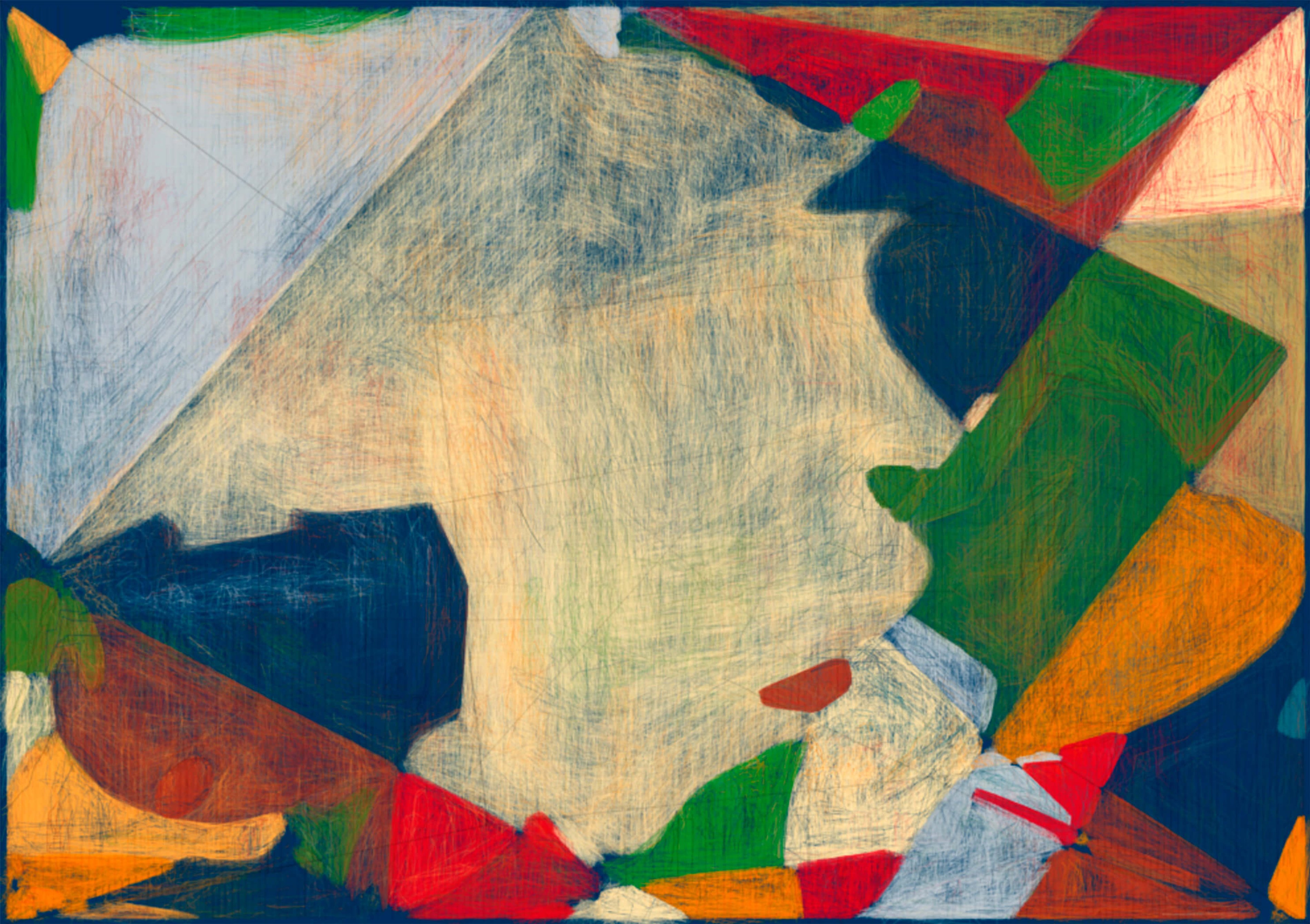

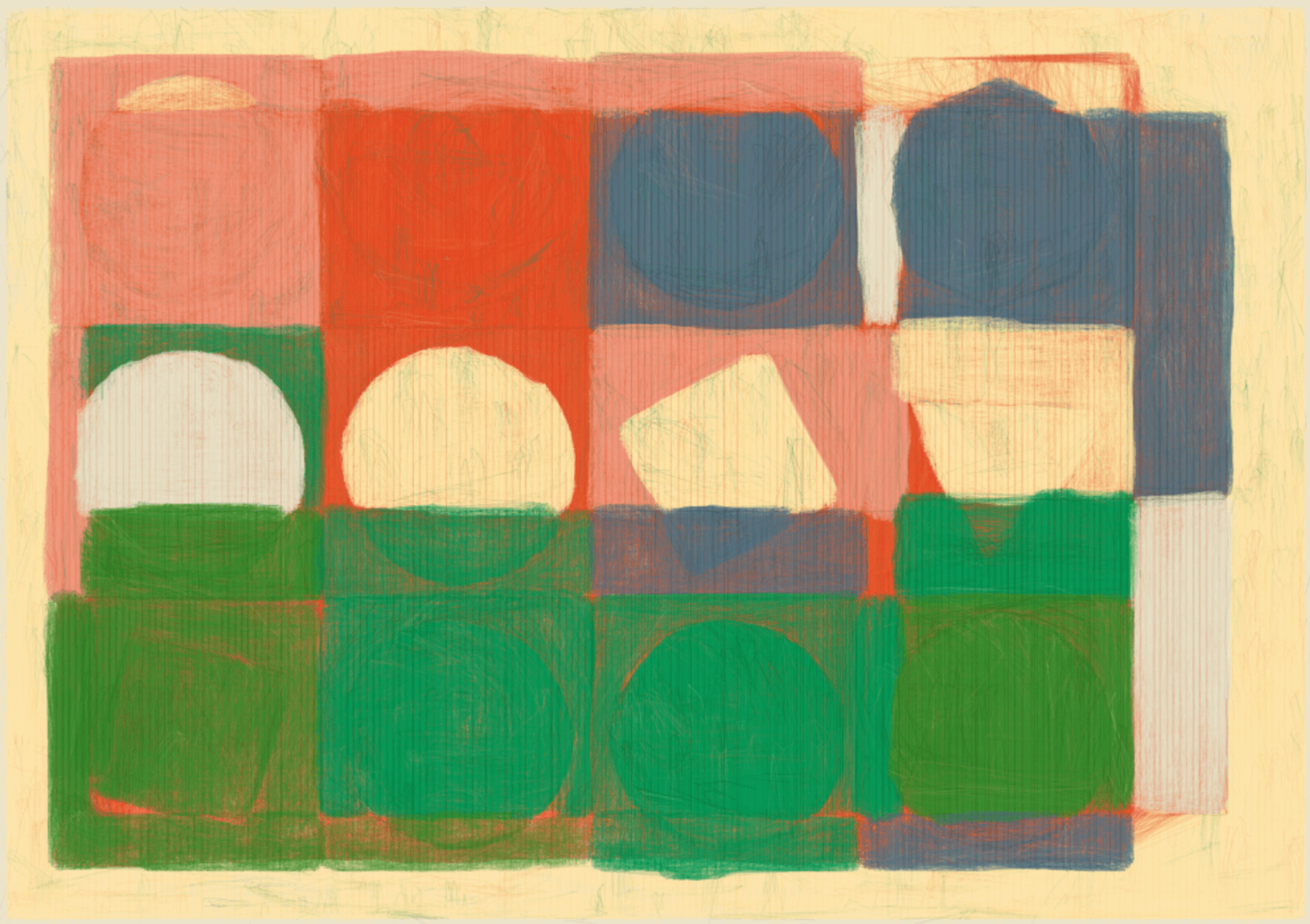

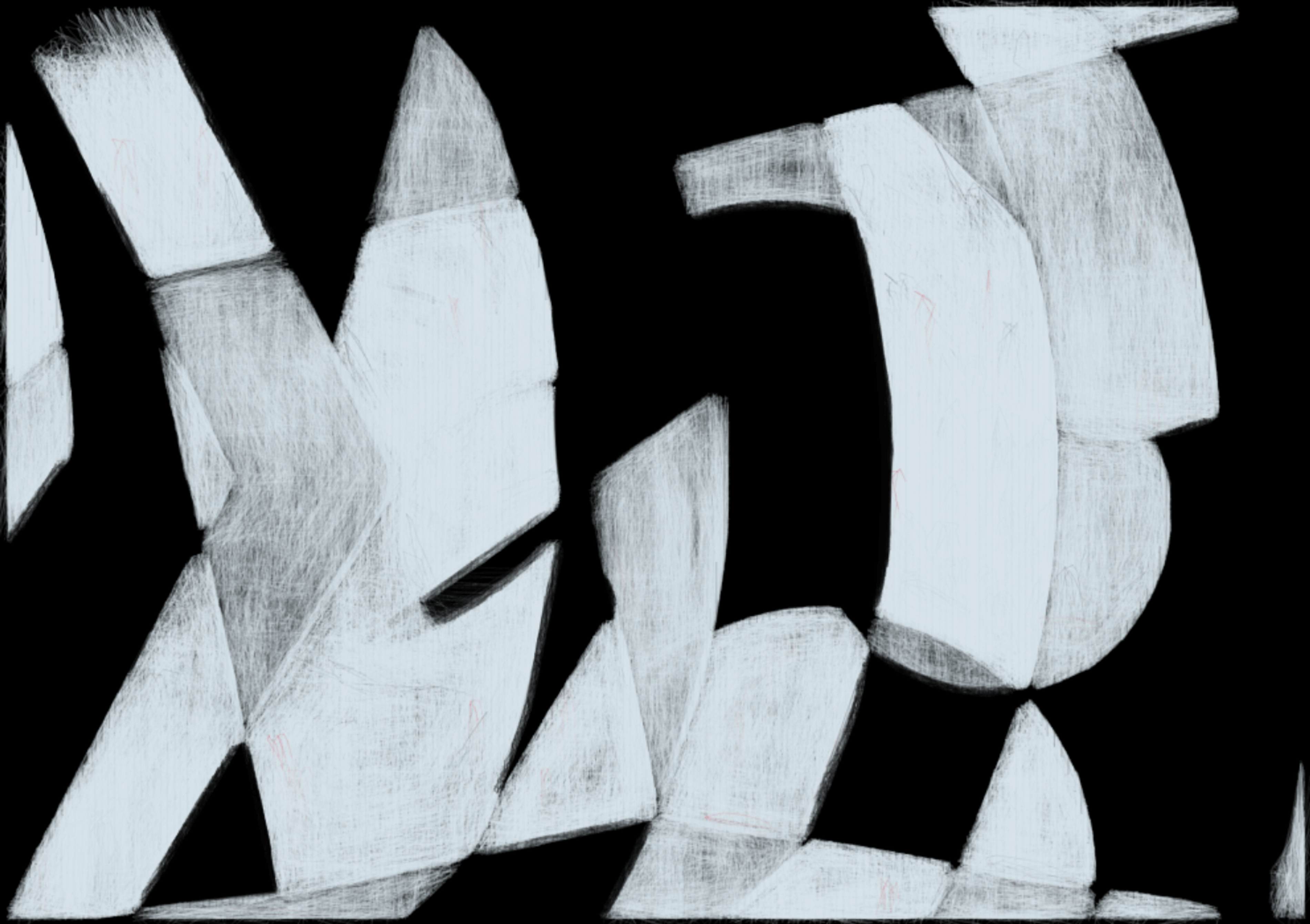

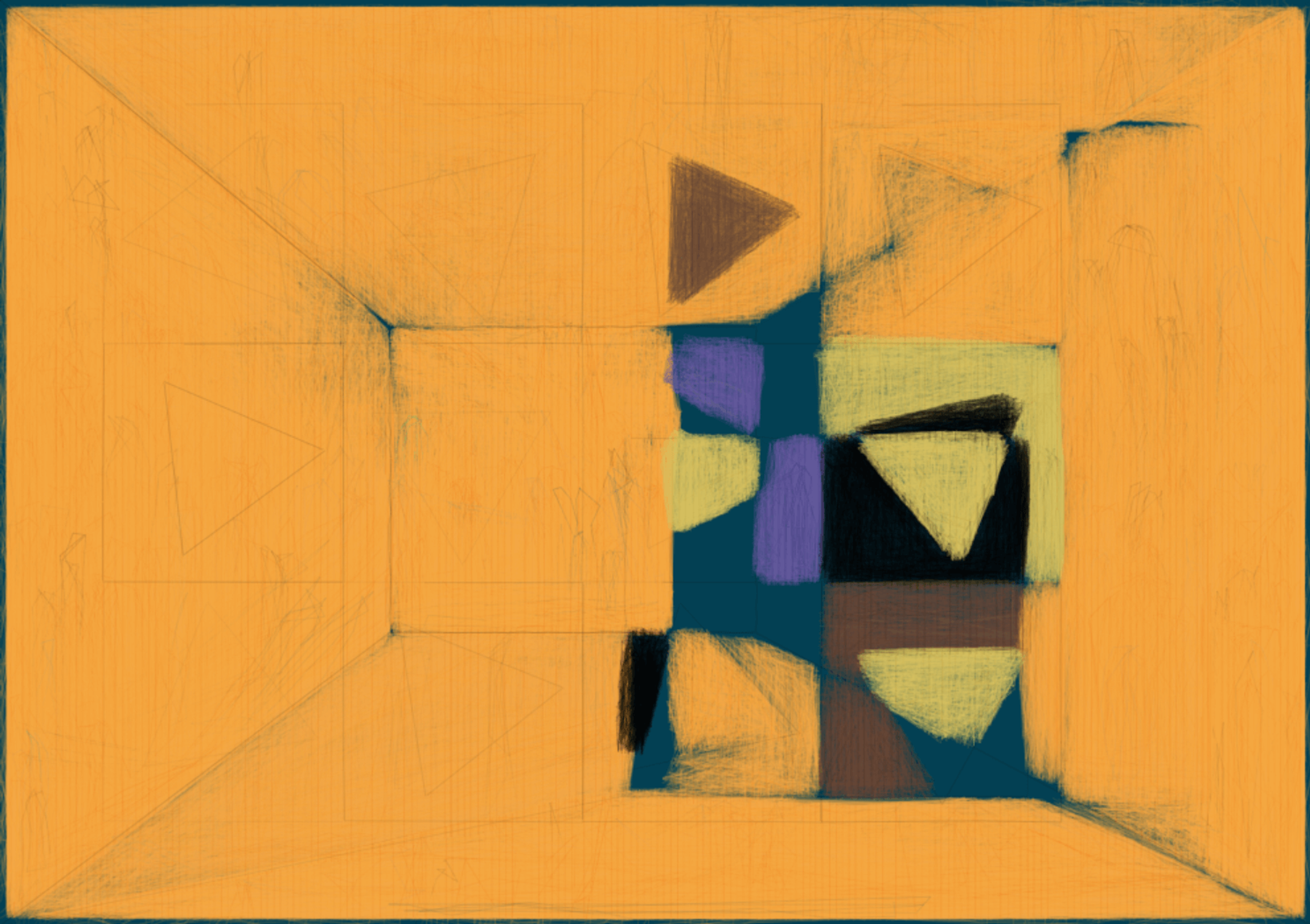

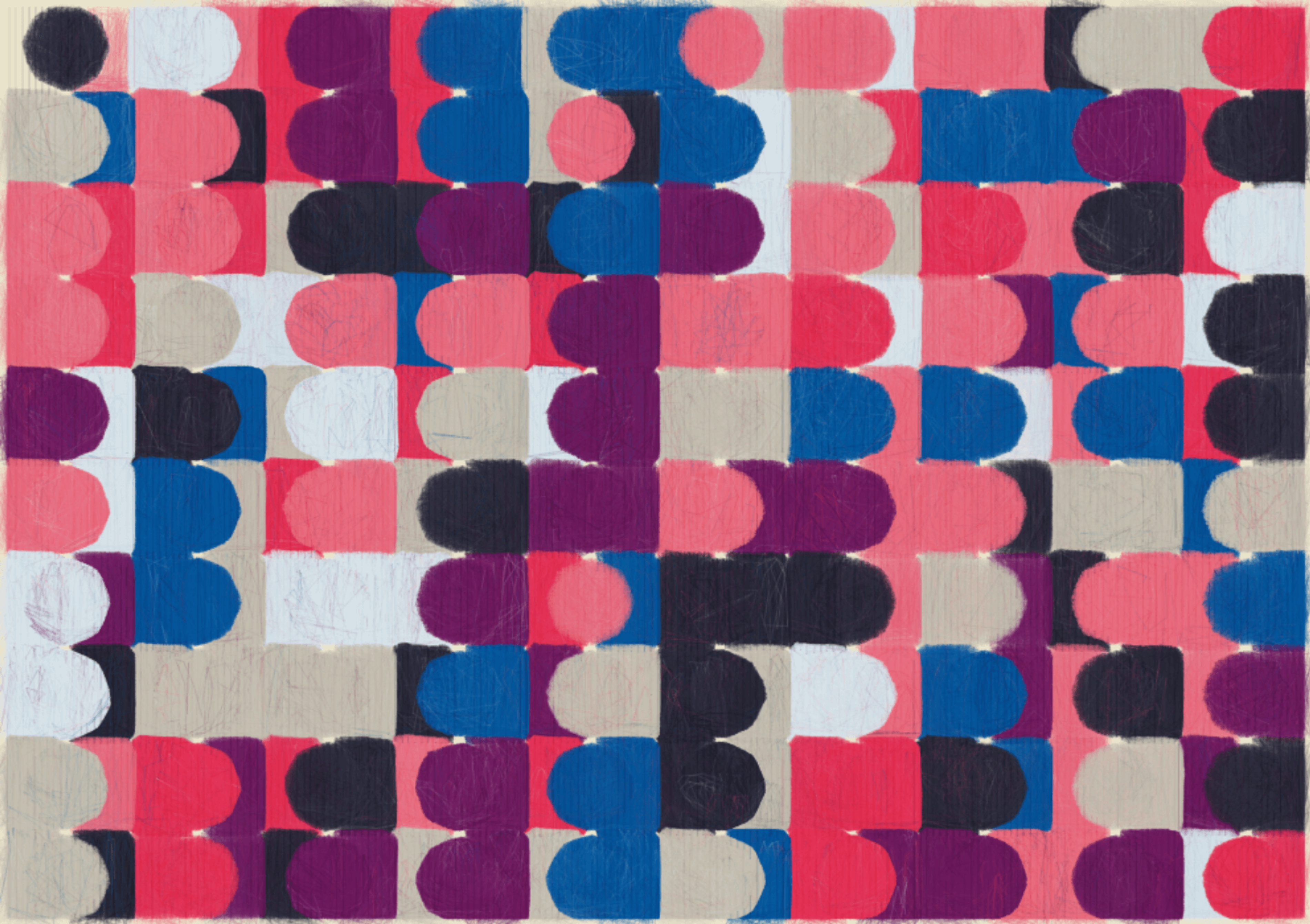
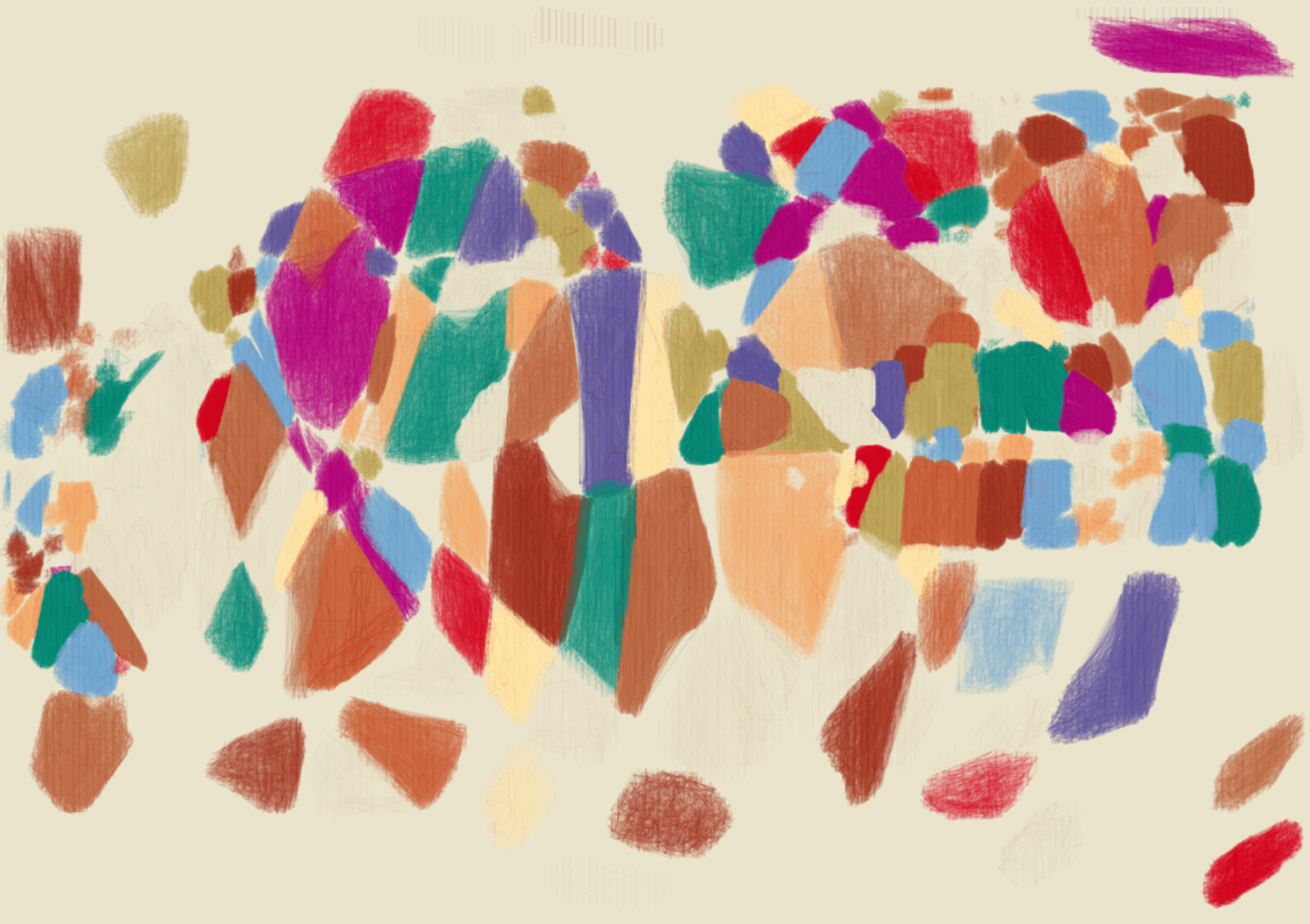
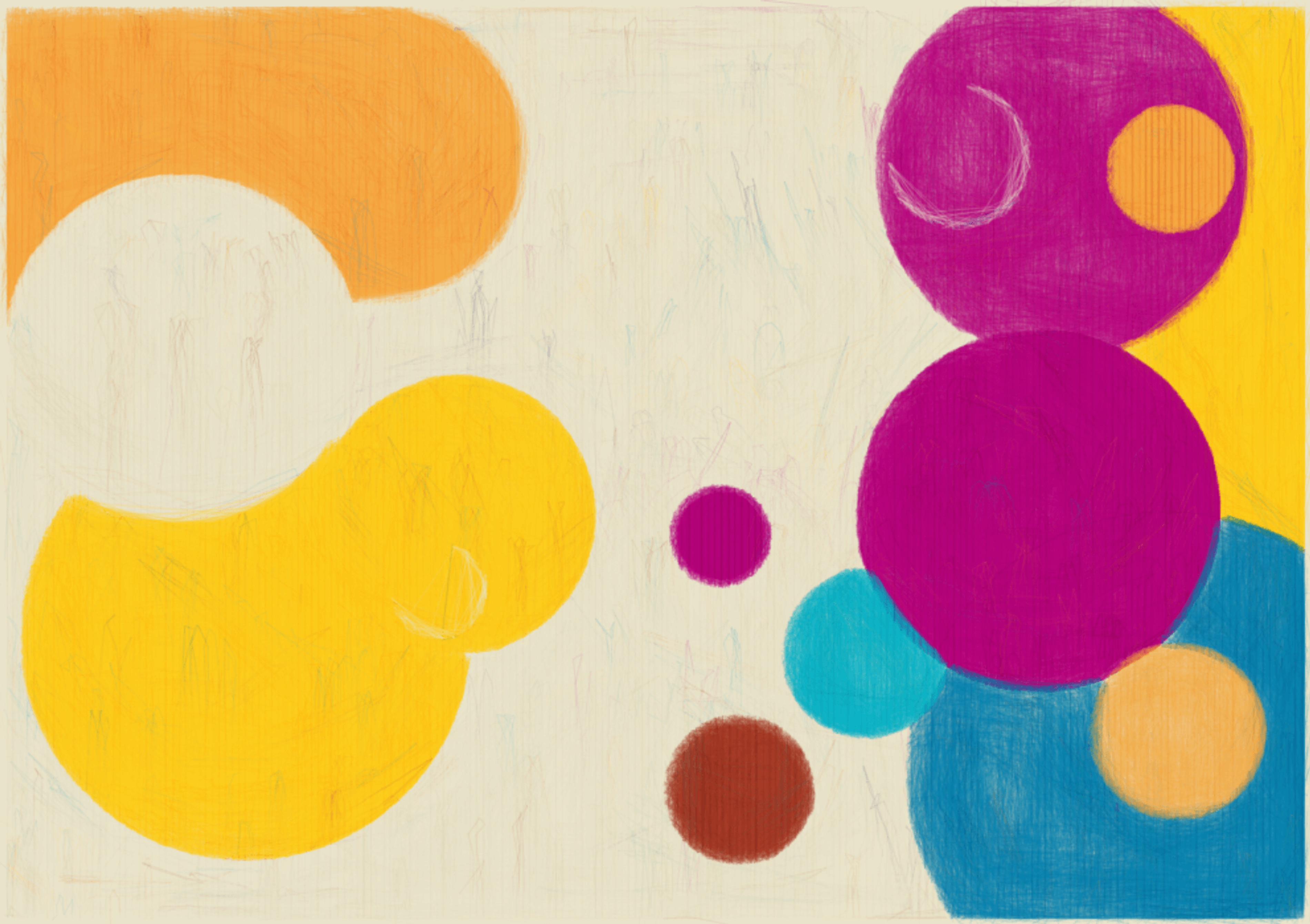
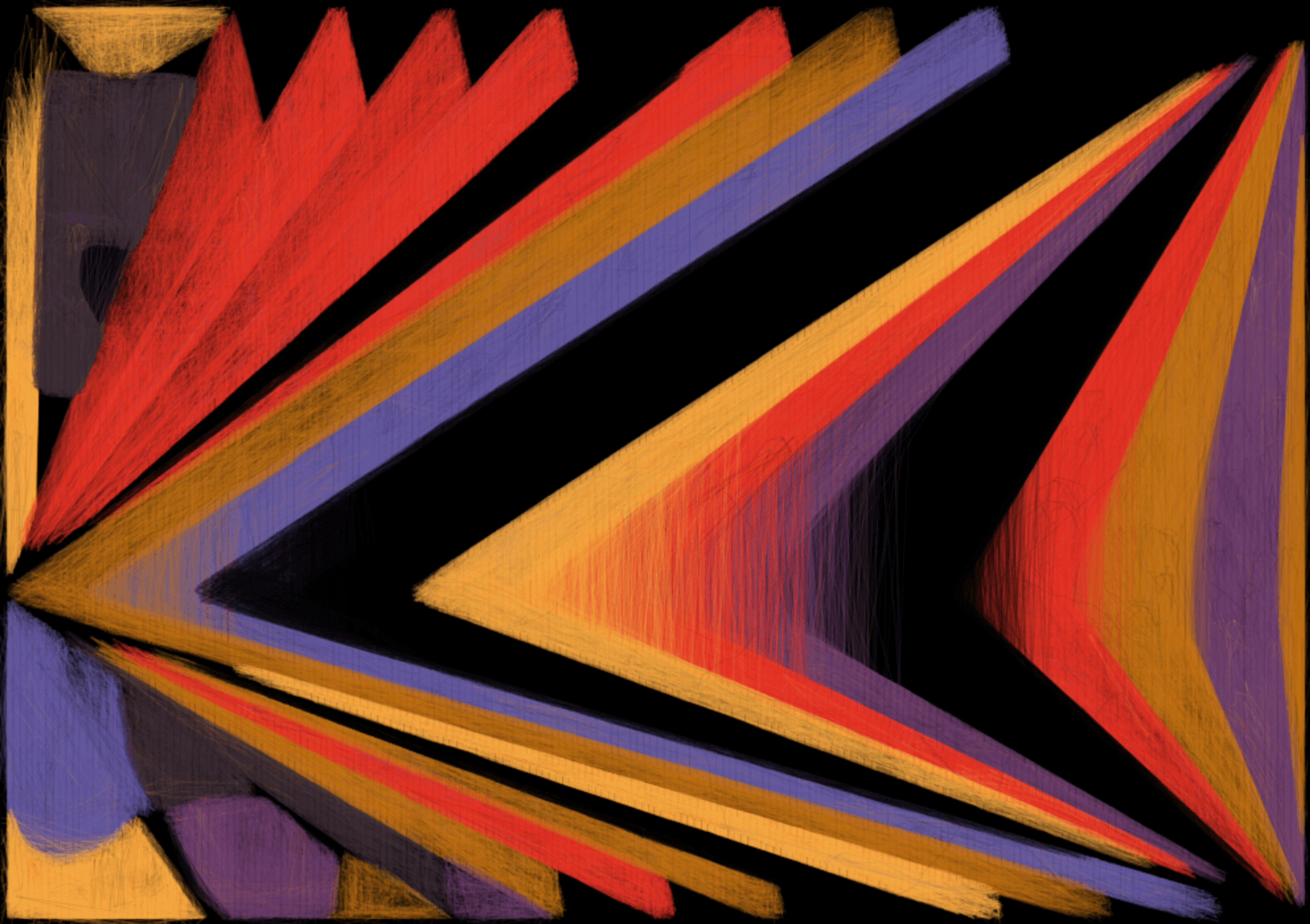
Sketchbook B by William Mapan
Over the broad history of generative art to date, the most common practice has involved the artist carrying out a final selection phase themselves. Most of my own work has been in this format. In fact, I was prompted to write these thoughts on direction and reaction while completing my recent curation work on Day Gardens. For that work, the final reaction phase was vital. After the algorithm was completed, I generated and viewed nearly 40,000 outputs, selecting only 50 to be in the final collection. My initial pass of filtering the outputs was incredibly intuitive, relying on my immediate split-second reaction to determine if the image should be discarded or if it should be saved and considered for inclusion in the final set of outputs. Because of this, the resulting Day Gardens collection was highly reflective of my own deeply personal (and sometimes inexplicable) aesthetic reaction to compositional ideas, rather than simply being a display of what directives I was capable of crafting.

Hobbs curating Day Gardens
While the number of outputs I viewed for Day Gardens may have been unusually high, the fact that the reactive-selection phase was rewarding in this way was not unusual. This is why this practice has been predominant for generative artists across the decades. It allows the generative idea to remain loose and wild, while the unique emotional resonance of the artist is able to shine through. The push and pull of direction and reaction can come together to present the artist’s messy idea in the most powerful way.
–
From time to time, I write about my thoughts and artistic process. If you'd like to be notified the next time I publish an essay, sign up for my newsletter in the menu.